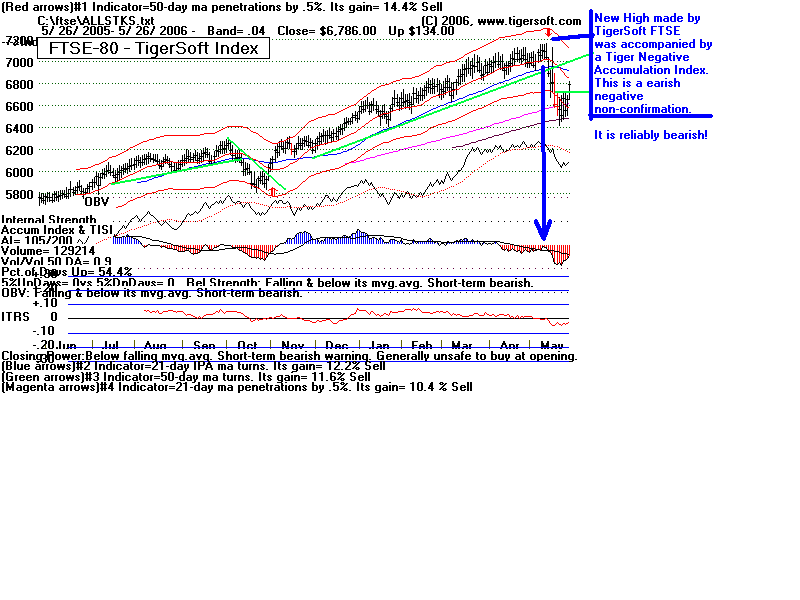TigerSoft works the same way with foreign stocks as it does with American stocks.
The stock data needed is daily opening, high, low, close and daily volume.
We provide data currently on 80 UK stocks that are in the FTSE.
The first thing a trader should do is look at the Peerless Stock Market Timing signals.
Though they are on the DJI-30. The US markets correlate very closely with all foreign
markets. The major Sell S9 on the DJI on May 5th led to steep declines everywhere
in the world!
Secondly, use TigerSoft to make a Tiger Index of your countries' stocks. Below is a chart
of the Tiger FTSE-80. You can see the May new highs were utterly false and bearish.
The TigerSoft Accumulation was negative as the false new highs were made. This is
a TigerSoft "Sell S9" (which is different than the Peerless S9 signal on the DJI-30.)".
When both types of Sell S9s occur in a short period of time, it is very bearish!
You can see how the FTSE fell very sharply in the two weeks afterwards.
Thirdly, even when your stock is in a trading range, use TigerSoft's automatic Buys and Sells
to make money in an otherwise frustrating period. Look at REX-L and RDSA-L.
(The "L" stands for London.)
Fourthly, as with any set of stocks, look for breakouts into new high territory.
The breakouts should be confirmed by the OBV (Aggressive Buying Line) making
a new high, too. The Accumulation Index should be positive. It should be
bulging
or have recently bulged. The price bar should be red on the day of the breakout,
showing
that volume was unusually high. You can see that in the cases of EMG-L,
MKS-L, NRK-L
and OML-L.
Fifthly, be wary of stocks showing steady red Distribution.
The TigerSoft Accumulation Index
is negative for more than 6 weeks. This suggests massive big-money selling, usually
prompted by being "insider informed". Look at CCL-L
